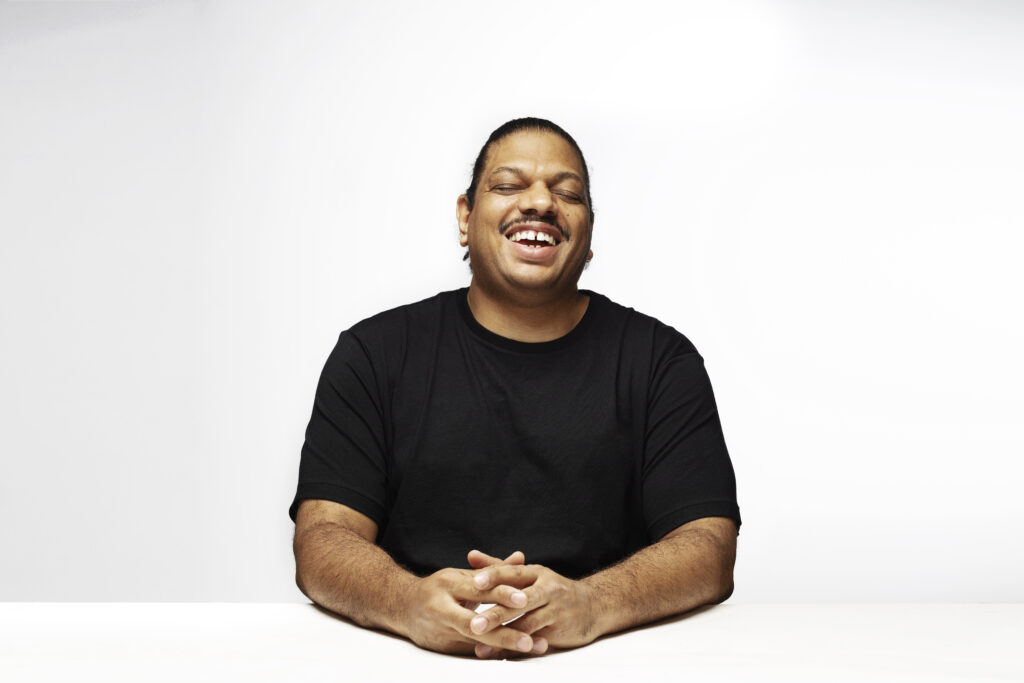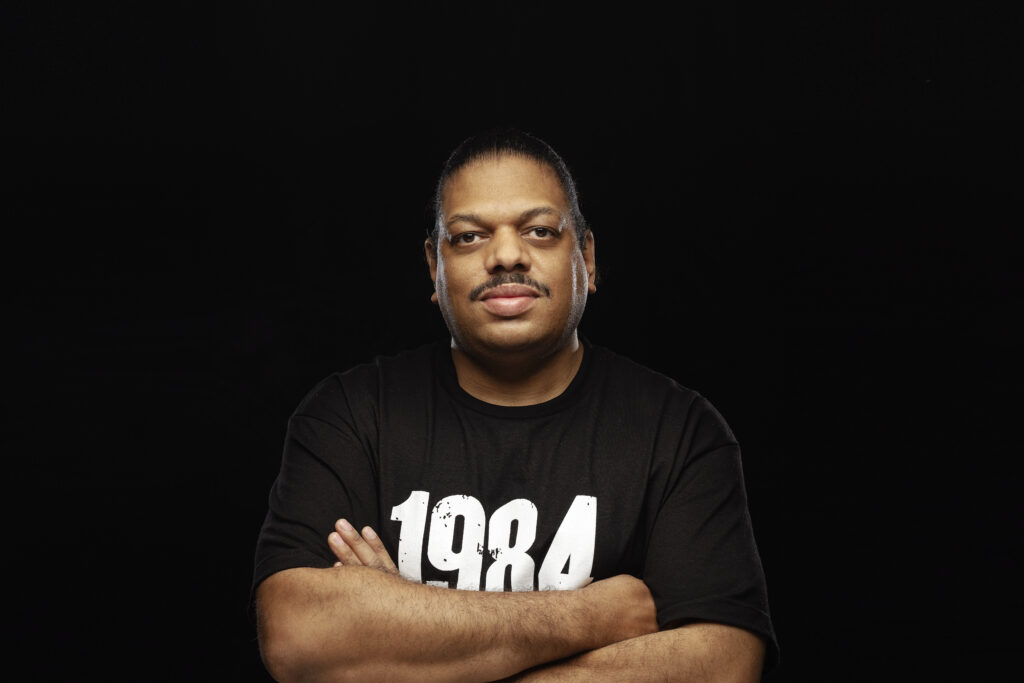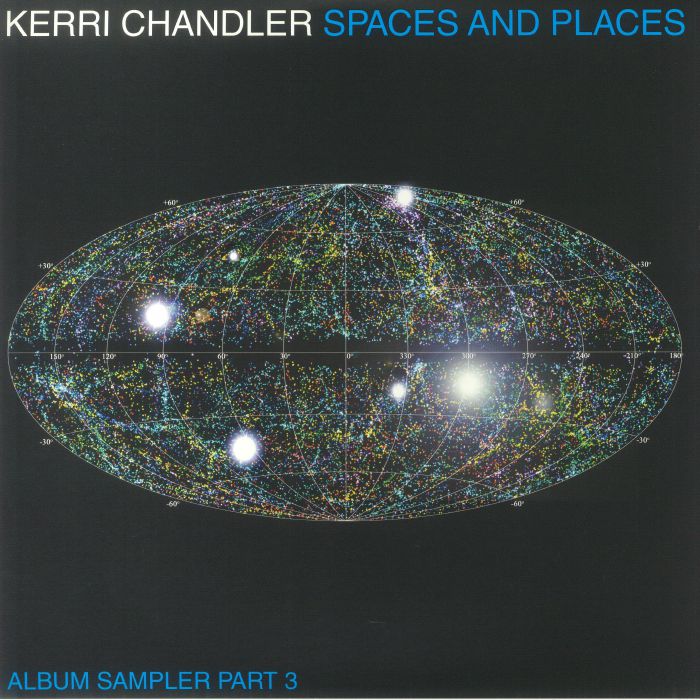Kerri Chandler interview – “I don’t think I could do anything like this again”
24 different tracks made for 24 different clubs

Kerri Chandler is sat in a hotel room in Amsterdam, ready to answer another round of questions from a music journalist. Over recent weeks, he’s done at least 20 other interviews, a reflection not only of the esteem in which he’s held within dance music culture, but also the size and scale of the project he’s promoting: his first album in 14 years, the undeniably epic and conceptual Spaces & Places.
Mercifully, this is his first interview of the day. He’s spent the rest of it traipsing around the city as a tourist, taking time out to visit Our House, a recently opened museum and interactive exhibition dedicated to the history of electronic dance music. “It was a lot of fun and a lot of people had fun playing with the things that were tactile,” Chandler says. “They had this sequencer that ran across this entire wall, which was set up like a TR-808 and a TR-909 [drum machine], and then they had a sampler and a keyboard in a second spot, and an analogue sequencer that did basslines, and these effects units… all the size of a wall. It was like a dance music version of the massive piano that Tom Hanks plays in Big. I spent a lot of time in there!”
Despite a career in production that stretches back to the turn of the ‘90s, and a DJing career that started in his native New Jersey in the mid 1980s, Chandler’s passion for messing around with hardware and crafting club-ready grooves has never dimmed. He puts this down to growing up in a family of DJs and musicians, with a father who was obsessed with big, audiophile-quality soundsystems.
“Every room had turntables and there were always soundsystems around the house – in the hallway we had these big, monster speakers, but with really, seriously clean sound,” Chandler reminisces. “My dad was so serious about the quality of the equipment he used. He’s wake us up in the morning by playing ‘Night on Bald Mountain’ by Bob James, really loud over this audiophile system!”
Crucially, he was also introduced to club culture at a young age too, being taken down to clubs with his dad, who would often bring musicians – percussionists and pianists most frequently – to play over his sets. “It would be like some wild fusion,” Chandler enthuses. “Sometimes there would be a keyboard player coming in over some jams, or they’d have some drum machine or another odd thing in the club. I was like, ‘what the hell is this?’ I picked it up and it became a thing for me.”
Those who’ve seen Chandler perform in clubs over the years frequently enthuse about his improvised keyboard overdubs – he has always asked clubs to make sure there’s a keyboard set up by the decks, as well as a microphone – and this approach has become something of a trademark. It’s this aspect of his performance personality, combined with his love of soundsystems, that partially inspired Spaces & Places. There’s a third key inspiration too: a desire to record and produce music inside venues, which he can trace back to the creation of one of his most celebrated early releases: 1992’s ‘The Shelter’ (credited to Gate-Ah).

“When Timmy Regisford and Merlin Bobb were opening up the Shelter club [in New York], they came to me and said, ‘we need a theme song for the club – something simple, something raw’,” he explains. “I said, ‘OK, I’ll make it for the club, but I want to go one better – I want to bring the gear in and build the tune in the club so it will sound like the best song you will hear in this club’. They had a Richard Long system in there and I tuned everything so it would sound exactly best in the club, over that system. The minute that song came on, nothing else sounded like it because it was made specifically for that club. I thought that was such an amazing way to do it – we’re making club music and making music inside the club makes perfect sense.”
A year or two later, Chandler asked his landlord if you could take over the vast basement space under his then current studio – a colossal cellar that was effectively the size of an entire East Orange city block – and built his own private club, which his keyboards, drum machines, mixing desk and effects units slap bang in the middle of the dancefloor. “I set it up the same with all the stacks around the room and my gear in the middle, so when I was making music, it was like I was making it in the club,” he enthuses. “I had the lights too and the strobe tubes and everything. My favourite stuff came out of there, like ‘Inspiration’.”
Knowing all of this, the concept behind Spaces & Places suddenly makes perfect sense. The set features 24 high-quality house tunes in the producer’s distinctive style, each recorded at a different legendary club space – some big, others small and intimate – where he’d previously performed on multiple occasions. The list of venues is undeniably impressive and includes such storied spaces as Ministry of Sound, Watergate (Berlin), Barbarellas (Pirovac, Croatia), Lux Fragil (Lisbon), Magazzini Generali (Milan) and Rex Club (Paris).
While recording at each venue, Chandler drew inspiration from the room and soundsystem, as well as his own memories of performing there. He also spent a lot of time on the sound design to ensure that the resultant songs made the most of the space and system they were made in tribute to.
“Everyone just bent over backwards to let me do whatever I wanted to in the clubs,” Chandler says with a smile. “I kept thinking to myself, ‘why has no one done this before because it’s so much fun’. I don’t know whether it’s because I’m out of my mind, or I know these people well enough that I can get away with it, but I know that it was a really creative process. I would use a lot of elements in the clubs as well – the tones and some of the instruments. I also used the acoustics of the clubs themselves.”
He cites several specific examples, such as his decision to record himself playing the infamous “ugly yellow piano” in Printworks’ green room – an instrument bearing the signatures of everyone who has played in the enormous London venue to date – and the sound of rumbling trains and a distant bingo caller on ‘Subbie’, his tribute to Glasgow’s Sub Club. The latter is a particularly good example of the process in action, especially in the alternative ‘Rattle The Subbie Mix’ form (available on the second vinyl and digital album sampler).

“I wanted to make the track very personal to that club, and the way people hammer at the ceiling when it’s going off is a big memory. So, I created a bassline that rattles different parts of the ceiling,” he explains. “The Rattle The Subbie mix is designed in such a way that it will rattle different parts of the ceiling in sequence, from the DJ booth to the toilets. So, every note of the bassline would rattle a different part of the club.”
It’s a brilliant example of the care and attention he took when recording the album, and an indication of the depth of thought behind each track. If we had time, he’d happily sit and explain the story behind each of the 24 tracks, the inspirations behind them – which range from legendary weekend-long parties in Ireland (as with his tribute to Sir Henry’s in Cork, ‘Keep One (But Do It Again)’), to the passing of his beloved uncle Aaron. ‘Back to Earth’, a track recorded in the Knockdown Center in NYC, features lyrics and vocals from his cousin Aaron Junior.
“After he lost his dad, I told him that he most therapeutic thing for me when something bad happens is to make music,” Chandler says, thoughtfully. “I can’t write a song unless something happens, because it has to have some meaning behind it. You can tell when somebody goes through something, because you can feel it in the music and the story behind it – it’s a true music. I told him to write about his dad and get it off his chest. I said, ‘say whatever you need to say, I feel the same thing – I’m not going to let you fail. Just let it happen and we’ll do it together. When you’re ready, let me know’. It took him a couple of months, then one day he said, ‘I’m ready, let’s do it’.”
That recording process – and the remarkable scenes when Chandler played the completed version in the same club the next night – was filmed by the team behind Dolby Atmos, the legendary audio company’s next-generation ‘immersive sound technology’. During the lockdowns of 2020 and ’21, Chandler taught himself how to use to software so he could mix the album in Dolby Atmos – the first time, as far as we’re aware, that a dance album has made the most of this cutting-edge technology.
“That’s one of the reasons I wanted to do it,” he confirms. “The cool part about it is that the system can create a virtual version of it for things like iPhones, so when you play the album through Tidal or Apple Music, Dolby Atmos knows the system you are using and adapts to it immediately. Whatever the system is – two channels, three channels, a soundbar and a sub, something with 30 channels m, headphones – it just knows the system you’re playing into and adapts to the shape of the set-up.”
Chandler’s brand of deep house has always been extremely immersive, but the Dolby Atmos-mixed version – available to stream, but currently not on the vinyl and DJ-friendly download versions – takes it to the next level, with individual elements moving across and around the sound space in crystal-clear clarity. It takes an already impressive album – a wonderful love letter to house music and the spaces in which we dance to it – to dizzying new heights. It’s no wonder that the project took Chandler years to develop, record, finish and perfect; it may well turn out to be the single defining release of his career, which given his length of service and the quality of his back catalogue is quite the compliment.
“Thank you,” he says genuinely and quietly when I offer this praise. “Honestly, I don’t think I could do anything like this again. I did have a funny idea though – if I do a remixed version, I have to go to different clubs to do the remixes! You know, like remix a track made at somewhere massive like Printworks in a small basement venue. I think that’s the only way I could flip it in a different way.”
Words: Matt Anniss